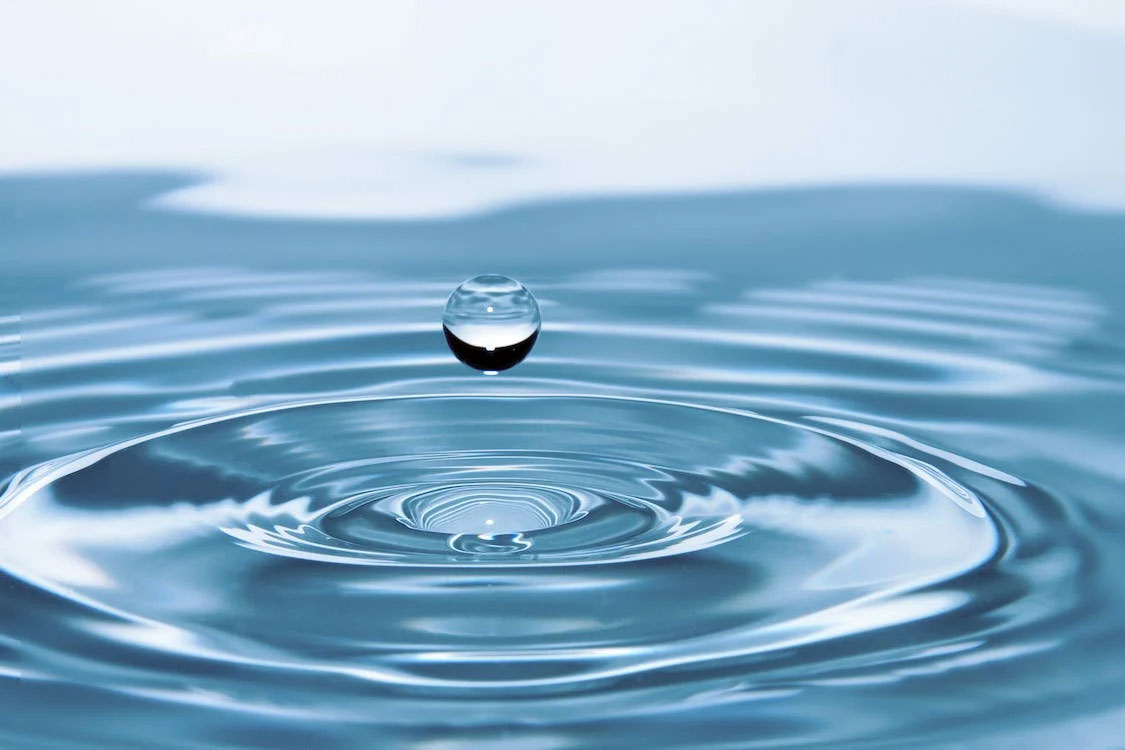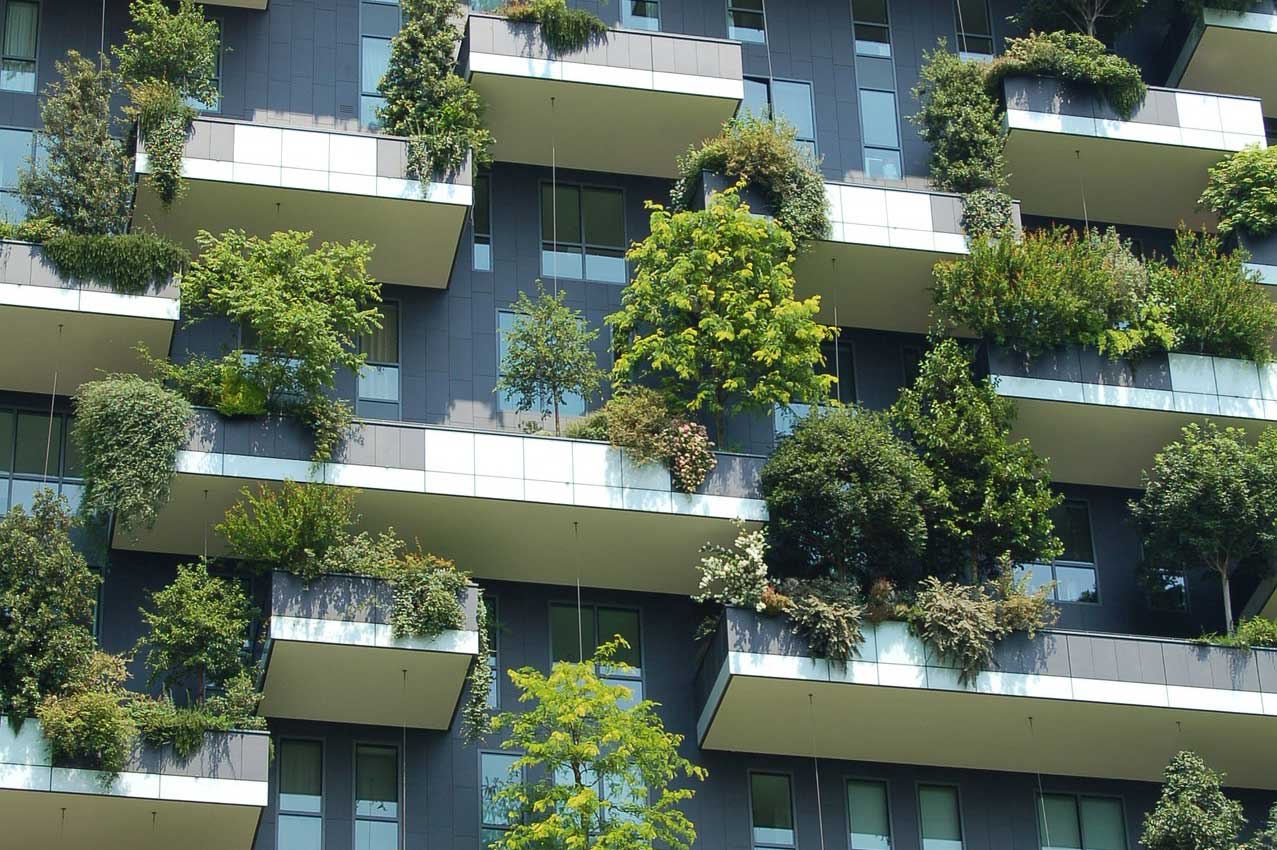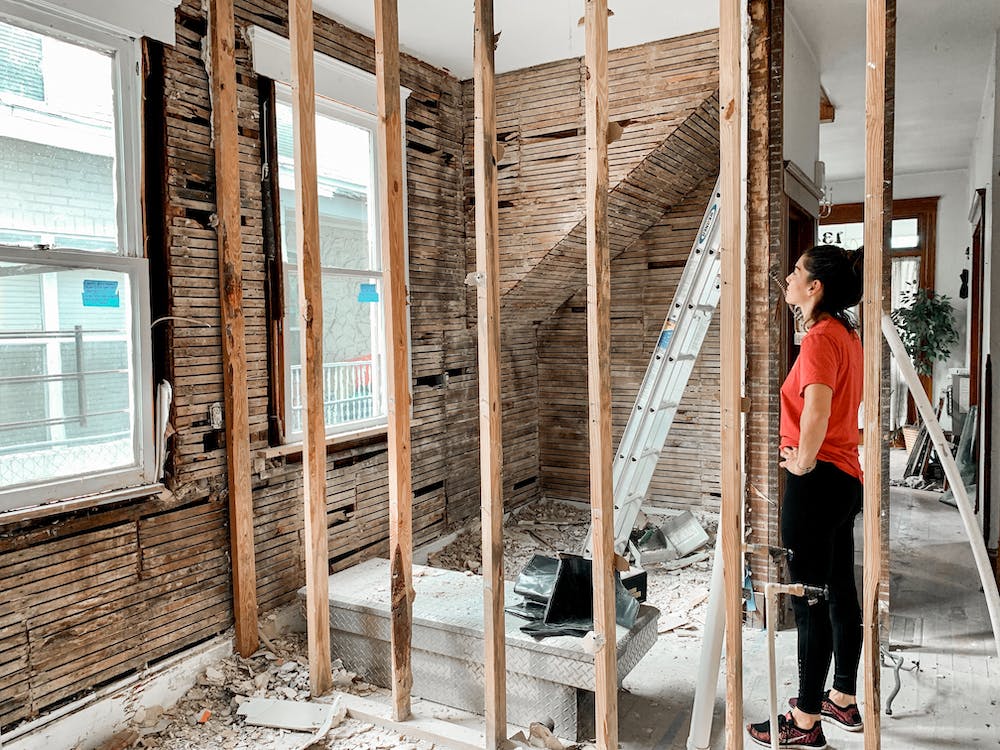Green Building Concepts
Water Conservation Strategies for Green Building Projects

Water is a precious resource, and its conservation is a crucial aspect of green building projects. Green buildings prioritize sustainability, environmental responsibility, and resource efficiency. Implementing effective water conservation strategies not only reduces water consumption but also helps preserve local water sources and ecosystems. This article explores various water conservation strategies for green building projects, highlighting the importance of responsible water use in creating more sustainable and resilient built environments.
Understanding Water Conservation in Green Buildings
Water conservation in green buildings involves adopting practices and technologies that optimize water use and minimize wastage. The goal is to reduce the overall demand for water, especially in regions facing water scarcity or experiencing drought conditions.
Efficient Water Fixtures and Appliances
Selecting water-efficient fixtures and appliances is fundamental to water conservation in green buildings. These include faucets, toilets, showers, dishwashers, and washing machines designed to use less water while maintaining functionality.
Low-Flow Plumbing Fixtures
Low-flow plumbing fixtures limit water flow without compromising performance. These fixtures reduce water consumption without sacrificing user comfort, making them ideal for green building projects.
Dual-Flush Toilets
Dual-flush toilets offer users the option of choosing between a low-water flush for liquid waste and a higher-water flush for solid waste. This choice allows for greater water conservation without compromising toilet efficiency.
Water-Efficient Faucets and Showerheads
Water-efficient faucets and showerheads reduce water flow rates while providing adequate water pressure. These fixtures are essential in reducing water wastage during daily use.
Rainwater Harvesting
Rainwater harvesting involves collecting and storing rainwater for various non-potable uses, such as landscape irrigation, toilet flushing, and laundry. Green buildings can integrate rainwater harvesting systems to reduce reliance on municipal water sources.
Greywater Recycling
Greywater refers to lightly used water from sinks, showers, and laundry. Greywater recycling systems treat and filter this water for reuse in irrigation or toilet flushing, reducing the demand for fresh water.
Drought-Tolerant Landscaping
Drought-tolerant landscaping utilizes plant species that require minimal water and can thrive in arid conditions. This approach reduces irrigation needs and conserves water in green building projects.
Xeriscaping and Native Plants
Xeriscaping is a landscaping method that focuses on water-efficient plants and design principles. Native plants are particularly well-suited to local climate conditions and require less water than non-native species.
Permeable Pavement
Permeable pavement allows rainwater to infiltrate the ground rather than creating runoff. This method reduces the burden on stormwater systems and supports groundwater recharge.
Water Leak Detection and Management
Regular water leak detection and prompt repair are essential in preventing water wastage. Green buildings employ leak detection systems to identify and address leaks efficiently.
Smart Irrigation Systems
Smart irrigation systems use weather data and soil moisture sensors to optimize irrigation schedules. By adjusting watering times based on actual needs, these systems conserve water while maintaining healthy landscapes.
Water Monitoring and Data Analytics
Water monitoring systems collect real-time data on water usage and patterns. Data analytics help identify trends and areas for improvement, allowing for informed water conservation strategies.
Education and Occupant Behavior
Educating building occupants about the importance of water conservation encourages responsible water use. Simple practices, such as turning off taps when not in use and reporting leaks promptly, contribute to water-saving efforts.
Water Conservation Certifications
Green building certifications, such as LEED (Leadership in Energy and Environmental Design) and BREEAM (Building Research Establishment Environmental Assessment Method), often include criteria related to water conservation. Achieving these certifications demonstrates a commitment to responsible water management.
Benefits of Water Conservation in Green Buildings
Reduced Water Consumption
By implementing water conservation strategies, green buildings significantly reduce their water consumption, minimizing their ecological footprint.
Lower Utility Bills
Conserving water leads to reduced water usage, resulting in lower utility bills for building owners and occupants.
Minimized Strain on Local Water Resources
Water conservation reduces the demand on local water resources, supporting sustainable water management practices and ensuring water availability for future generations.
Enhanced Resilience to Water Scarcity
In regions susceptible to water scarcity or drought, green buildings with effective water conservation measures are better equipped to cope with challenging conditions.
Conclusion
Water conservation is an essential pillar of green building projects. By incorporating efficient fixtures, rainwater harvesting, greywater recycling, drought-tolerant landscaping, and other water-saving strategies, green buildings significantly reduce water consumption and promote responsible water use. The benefits of water conservation extend beyond environmental impact to include financial savings, enhanced water resource management, and increased resilience in the face of water scarcity. As water becomes an increasingly valuable resource, water conservation in green building projects will continue to play a vital role in creating a more sustainable and water-efficient built environment.
Frequently Asked Questions (FAQs)
1. Can water conservation strategies be applied to existing buildings? Yes, water conservation strategies can be retrofitted into existing buildings. Replacing fixtures, implementing rainwater harvesting systems, and adopting smart irrigation are some ways to improve water efficiency in existing structures.
2. Are water-efficient fixtures expensive to install in green buildings? While water-efficient fixtures may have a higher upfront cost, the long-term savings in water bills often outweigh the initial investment. Additionally, water-efficient fixtures contribute to the overall sustainability and value of the green building.
3. How do green building certifications promote water conservation? Green building certifications, such as LEED and BREEAM, include criteria that encourage water conservation practices. Meeting these criteria demonstrates a commitment to sustainable water management and can lead to certification rewards.
4. Can water conservation strategies be applied to both residential and commercial green buildings? Yes, water conservation strategies are applicable to both residential and commercial green buildings. The principles of efficient water use and responsible water management are relevant across various building types.
5. What role do occupants play in water conservation in green buildings? Building occupants play a crucial role in water conservation by adopting water-saving habits and promptly reporting leaks or issues. Education and awareness programs can further encourage responsible water use among occupants.
Green Building Concepts
Exploring the Connection Between Green Building and Human Health

In a world that is becoming increasingly conscious of the environmental impact of human activities, the concept of Green Building and Human Health has gained prominence. Green buildings go beyond just energy efficiency; they are designed with a holistic approach that considers both environmental sustainability and the well-being of occupants. In this article, we will delve into the fascinating connection between green building practices and human health, exploring how these eco-friendly structures can positively impact the health and well-being of those who live and work within them.
Introduction
Green building is a design philosophy that prioritizes sustainability and human well-being. Beyond energy conservation, it focuses on creating spaces that enhance the quality of life for occupants while minimizing the structure’s impact on the environment.
Understanding Green Building
Green building encompasses various practices that promote resource efficiency, such as using renewable energy sources, optimizing water usage, and employing eco-friendly construction materials. The goal is to create structures that operate harmoniously with their surroundings.
The Impact on Indoor Air Quality
Indoor air quality significantly affects human health. Green buildings integrate ventilation systems that provide fresh air, reducing the concentration of pollutants indoors. This leads to improved respiratory health and increased overall comfort.
Natural Light and Its Effects on Health
Access to natural light has been linked to enhanced mood, better sleep, and increased productivity. Green buildings maximize natural light through well-placed windows and reflective surfaces, contributing to the occupants’ physical and mental well-being.
Biophilic Design: Bringing Nature Indoors
Biophilic design seeks to reconnect people with nature. Incorporating elements like indoor plants, natural textures, and water features in green buildings promotes relaxation, reduces stress, and boosts cognitive function.
Materials Matter: Non-Toxic Choices
Traditional construction materials can emit harmful chemicals into the air over time. Green buildings prioritize non-toxic, sustainable materials that ensure a healthier indoor environment and minimize long-term health risks.
Enhancing Physical Health through Active Design
Green building encourages physical activity by designing spaces that encourage movement. Features like staircases designed for daily use and easy access to outdoor areas promote exercise, reducing the risk of lifestyle-related diseases.
Mental Health Benefits of Green Spaces
Access to green spaces within and around buildings has been proven to lower stress levels and improve mental well-being. Green buildings often incorporate gardens, rooftop terraces, and courtyards to provide a calming sanctuary for occupants.
Energy Efficiency and Health
Energy-efficient buildings consume less resources and have a lower carbon footprint. This not only benefits the environment but also contributes to a healthier community by reducing air pollution and its associated health risks.
Community and Social Well-being
Green buildings foster a sense of community by creating shared spaces that encourage interaction among occupants. This sense of belonging enhances social well-being and supports mental health.
Cost Considerations and Long-Term Savings
While upfront costs for green building may be higher, the long-term savings are substantial. Energy-efficient features lead to reduced utility bills, and the improved occupant health results in lower healthcare expenses.
Barriers to Green Building Implementation
Despite its advantages, green building implementation faces challenges like lack of awareness, higher initial costs, and resistance to change. Overcoming these barriers requires a collective effort from governments, industries, and communities.
Overcoming Challenges for a Healthier Future
Education and advocacy play a crucial role in driving the adoption of green building practices. Governments can incentivize green initiatives, and businesses can prioritize sustainable construction methods to create a healthier built environment.
Case Studies: Successful Green Building Projects
Numerous examples around the world showcase the positive impact of green building on both human health and the environment. Projects like the Bullitt Center in Seattle and the Edge in Amsterdam set the standard for sustainable design and its benefits.
The Future of Green Building and Human Health
As awareness grows, the future of green building looks promising. Advancements in technology, increased collaboration, and evolving regulations will lead to more innovative and health-focused design solutions.
Conclusion
The interplay between green building and human health is undeniable. By creating spaces that prioritize sustainability, natural elements, and occupant well-being, green buildings offer a pathway to a healthier and more harmonious future.
FAQs
- Are green buildings more expensive to construct initially?While upfront costs can be higher, the long-term savings in energy and health-related expenses often outweigh the initial investment.
- Do green buildings only focus on energy efficiency?No, green buildings also emphasize indoor air quality, natural light, materials selection, and promoting occupant well-being.
- Can green building practices be applied to existing structures?Yes, retrofitting existing buildings with energy-efficient systems and sustainable materials is a common practice in green building.
- How does biophilic design positively impact mental health?Biophilic design elements, such as indoor plants and natural textures, have been shown to reduce stress, anxiety, and improve cognitive function.
- What role do individuals play in promoting green building?Individuals can advocate for sustainable practices, support green initiatives, and make environmentally conscious choices in their daily lives.
Green Building Concepts
Green Building Technology in Hot Climate Regions

As the world continues to grapple with the effects of climate change, the demand for sustainable and environmentally-friendly solutions has grown exponentially. Green building technology, also known as sustainable construction, has emerged as a vital approach to address these challenges. In hot climate regions, where soaring temperatures can pose unique challenges to building design and energy consumption, the application of green building technology becomes even more critical.
Understanding Green Building Technology
What is Green Building Technology?
Green building technology refers to the practice of creating structures that prioritize resource efficiency, environmental sustainability, and occupant well-being. It aims to minimize the negative impact of construction on the environment while maximizing energy efficiency, water conservation, and indoor air quality.
Key Principles of Green Building
- Energy Efficiency: Implementing energy-efficient design strategies, such as proper insulation, efficient HVAC systems, and the use of renewable energy sources like solar panels.
- Sustainable Materials: Using environmentally-friendly building materials that have minimal carbon footprint, such as recycled or locally sourced materials.
- Water Conservation: Employing water-saving technologies like low-flow fixtures, rainwater harvesting, and efficient irrigation systems.
- Site Optimization: Designing buildings to make the most of natural resources, optimizing sunlight exposure, and reducing heat absorption.
Green Building Technology in Hot Climate Regions
Adaptation to High Temperatures
Designing buildings in hot climate regions requires a special focus on reducing heat absorption and improving ventilation. Techniques like cool roofs, which reflect sunlight and emit absorbed heat, and passive cooling systems, such as natural cross-ventilation, help maintain comfortable indoor temperatures without excessive reliance on energy-intensive cooling systems.
Efficient Water Management
Water scarcity often plagues hot climate areas. Green building solutions include installing rainwater harvesting systems to collect and store rainwater for non-potable uses like irrigation and flushing toilets. Greywater recycling systems can also be implemented to reuse water from sinks and showers.
Native Landscaping
Landscaping plays a significant role in the microclimate around buildings. Planting native vegetation that is adapted to the local climate requires less water and maintenance, thus reducing the overall environmental impact.
Solar Power Integration
Hot climates provide ample sunlight, making them ideal for harnessing solar energy. Incorporating solar panels into building design not only reduces energy consumption but also contributes to the production of clean, renewable energy.
Benefits of Green Building in Hot Climate Regions
Energy Savings
By implementing energy-efficient design and utilizing renewable energy sources, green buildings in hot climate regions significantly reduce energy consumption and related costs.
Improved Comfort
Effective design strategies, such as proper insulation and ventilation, contribute to maintaining a comfortable indoor environment even in scorching temperatures.
Environmental Preservation
Green building technologies help lower carbon emissions and reduce the demand for natural resources, thus contributing to a healthier planet.
Economic Advantages
Though initial costs may be higher, the long-term benefits of lower operational costs and increased property value make green buildings economically viable.
Conclusion
The application of green building technology in hot climate regions is not only a sustainable solution but also a necessity. By embracing resource-efficient designs, renewable energy sources, and innovative construction methods, we can mitigate the environmental impact of construction while creating comfortable and energy-efficient spaces.
FAQs:
- Is green building technology only suitable for new constructions? Green building principles can be applied to both new constructions and retrofitting existing buildings to enhance their energy efficiency and sustainability.
- Do green buildings in hot climates still need traditional cooling systems? While green buildings prioritize passive cooling techniques, some may still require energy-efficient cooling systems to ensure optimal comfort during extreme heatwaves.
- Are green building technologies expensive to implement? Initial costs may be slightly higher, but the long-term benefits, including reduced operational expenses and increased property value, often outweigh the upfront investment.
- Can green buildings in hot climates generate surplus energy? Yes, with proper solar power integration, green buildings can generate surplus energy, which can be fed back into the grid, potentially leading to energy cost savings.
- Are there any government incentives for implementing green building technology? Many governments offer incentives, tax breaks, and grants to encourage the adoption of green building practices, making it a financially attractive option for builders and developers.
Design & Construction
Strategies for Retrofitting Existing Buildings to Green Standards

Retrofitting existing buildings to green standards is a crucial step in achieving sustainability goals and reducing environmental impact. Green retrofits involve upgrading the energy efficiency, water usage, and overall environmental performance of older structures. By implementing thoughtful strategies, building owners can transform their properties into eco-friendly and resource-efficient spaces. This article explores various strategies for retrofitting existing buildings to meet green standards and contribute to a more sustainable built environment.
Understanding Green Building Retrofits
Green building retrofits involve upgrading existing structures to meet modern sustainability standards. The goal is to enhance energy efficiency, reduce resource consumption, and minimize environmental impact.
Energy Efficiency Upgrades
Improving energy efficiency is a primary focus of green retrofits. This can include upgrading windows and doors, adding insulation, sealing air leaks, and enhancing the building envelope to reduce heating and cooling demands.
Lighting Improvements
Replacing outdated lighting fixtures with energy-efficient LED lights can significantly reduce energy consumption and maintenance costs. Implementing daylighting strategies can also reduce the need for artificial lighting.
HVAC System Optimization
Optimizing heating, ventilation, and air conditioning (HVAC) systems can result in substantial energy savings. Installing programmable thermostats, upgrading to energy-efficient equipment, and regular maintenance are essential steps in HVAC retrofitting.
Insulation and Air Sealing
Proper insulation and air sealing prevent energy loss and improve indoor comfort. Insulating walls, roofs, and floors can reduce heating and cooling needs, leading to lower energy bills.
Renewable Energy Integration
Consider integrating renewable energy sources, such as solar panels or wind turbines, to supplement the building’s energy needs. Generating clean energy on-site reduces reliance on conventional energy sources.
Water Conservation Measures
Water-saving retrofits can include low-flow fixtures, efficient irrigation systems, and water-efficient appliances. Reducing water usage benefits both the environment and lowers water bills.
Low-Flow Fixtures and Appliances
Replacing old plumbing fixtures and appliances with water-efficient alternatives helps conserve water and contributes to green building goals.
Rainwater Harvesting and Greywater Recycling
Implementing rainwater harvesting systems allows buildings to collect and store rainwater for non-potable uses. Greywater recycling systems treat and reuse lightly used water from sinks and showers, further conserving water.
Sustainable Materials and Finishes
Using eco-friendly and sustainable building materials during retrofitting reduces the building’s environmental footprint. Look for materials with low embodied energy and recyclable content.
Indoor Air Quality Enhancement
Improving indoor air quality through proper ventilation, air purification, and the use of low-emission materials ensures a healthier and more comfortable indoor environment for occupants.
Green Roof and Vertical Garden Installations
Green roofs and vertical gardens can be installed on existing buildings to provide additional insulation, improve air quality, and create habitat for wildlife.
Smart Building Technology Integration
Integrating smart building technologies, such as energy management systems and automated controls, enhances energy efficiency and occupant comfort.
Behavior Change and Occupant Engagement
Educating occupants about sustainable practices and encouraging behavior change can significantly impact resource conservation and sustainability efforts.
Life Cycle Analysis and Cost-Effectiveness
Conducting life cycle assessments helps evaluate the environmental impact of retrofitting strategies and determine their long-term cost-effectiveness.
Green Building Certifications and Incentives
Seeking green building certifications, like LEED (Leadership in Energy and Environmental Design), can provide guidance and recognition for successful retrofitting projects. Additionally, governments and organizations often offer incentives for green retrofits.
Phased Retrofitting Approaches
For large-scale retrofits, phasing the project allows for more manageable implementation and financing, enabling building owners to achieve green standards progressively.
Collaboration with Green Consultants and Contractors
Working with green building consultants and contractors ensures that retrofitting strategies align with sustainability goals and best practices.
Public Awareness and Education
Raising public awareness about the importance of green retrofits and their benefits can encourage more building owners to adopt sustainable practices.
Conclusion
Retrofitting existing buildings to green standards is a critical endeavor to create a more sustainable and resilient built environment. By implementing energy efficiency upgrades, optimizing HVAC systems, integrating renewable energy, and adopting water conservation measures, building owners can significantly reduce their environmental impact and operating costs. Sustainable materials, green technologies, and occupant engagement further contribute to the success of retrofitting projects. Collaborating with green consultants and pursuing certifications adds credibility and recognition to these eco-friendly efforts. Ultimately, green building retrofits play a vital role in addressing climate change and ensuring a sustainable future for generations to come.
-

 Sustainable Materials10 months ago
Sustainable Materials10 months agoA Guide to Choosing Eco-Friendly Building Materials
-

 Green Building Concepts10 months ago
Green Building Concepts10 months agoImportance of Indoor Air Quality in Green Buildings
-

 Design & Construction10 months ago
Design & Construction10 months agoRole of Green Roofs in Urban Sustainability
-

 Green Building Concepts10 months ago
Green Building Concepts10 months agoGreen Building Technology in Hot Climate Regions
-

 Design & Construction10 months ago
Design & Construction10 months agoExploring Passive House Design Principles for Energy Efficiency
-

 Sustainable Materials9 months ago
Sustainable Materials9 months agoExploring the Benefits and Versatility of Poured-in-Place Rubber Playground Surfacing for Playgrounds


![Monthly Building Resources [Digital] - April 2023](https://www.geotimes.xyz/wp-content/uploads/2023/04/Title-ebook-f.jpg)








Pingback: Benefits of Green Building for Sustainable Development
Pingback: Green Building Technology in Hot Climates: A Sustainable Approach
Pingback: Retrofitting Existing Buildings to Green Standards